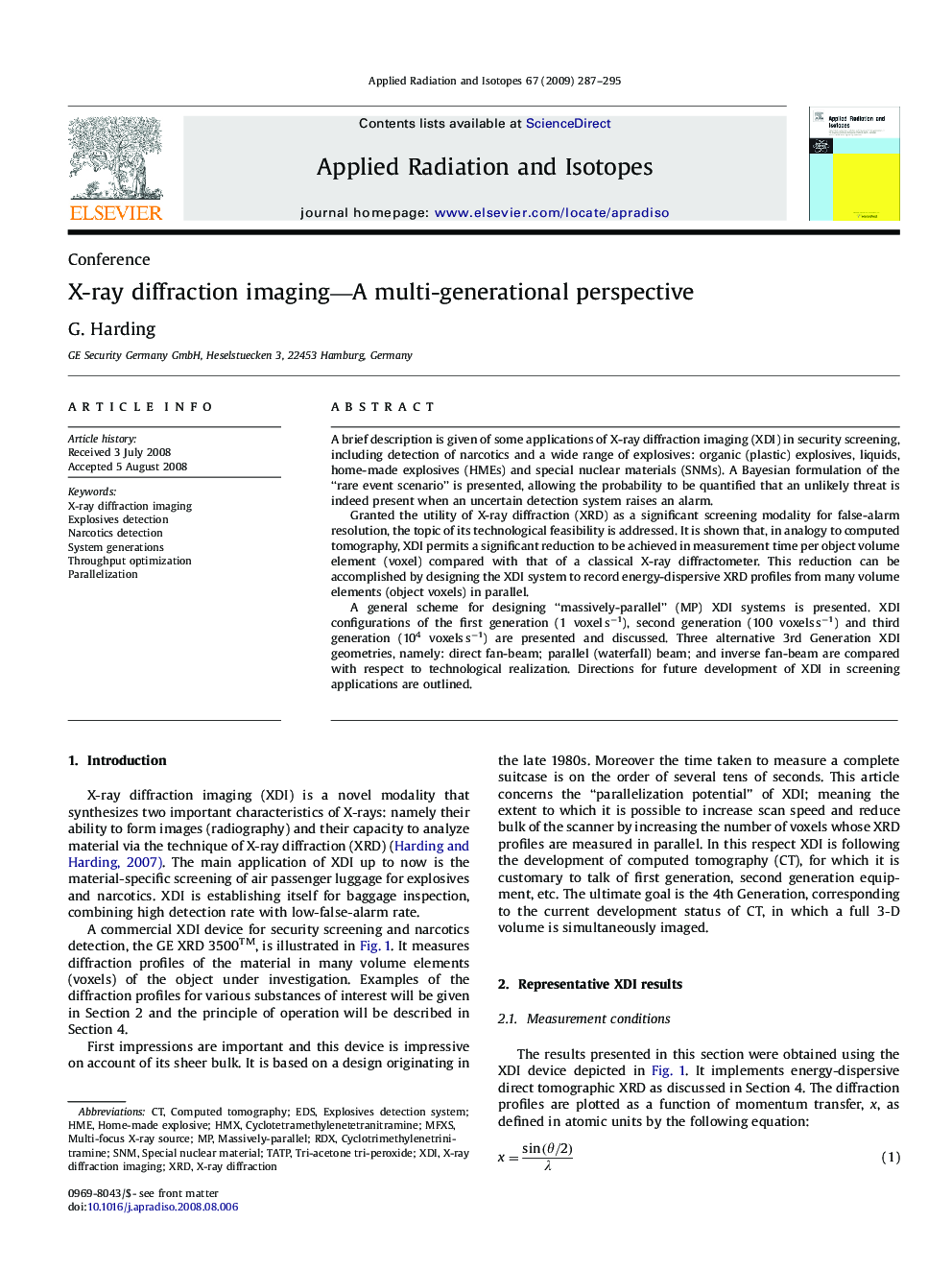| Article ID | Journal | Published Year | Pages | File Type |
|---|---|---|---|---|
| 1879458 | Applied Radiation and Isotopes | 2009 | 9 Pages |
A brief description is given of some applications of X-ray diffraction imaging (XDI) in security screening, including detection of narcotics and a wide range of explosives: organic (plastic) explosives, liquids, home-made explosives (HMEs) and special nuclear materials (SNMs). A Bayesian formulation of the “rare event scenario” is presented, allowing the probability to be quantified that an unlikely threat is indeed present when an uncertain detection system raises an alarm.Granted the utility of X-ray diffraction (XRD) as a significant screening modality for false-alarm resolution, the topic of its technological feasibility is addressed. It is shown that, in analogy to computed tomography, XDI permits a significant reduction to be achieved in measurement time per object volume element (voxel) compared with that of a classical X-ray diffractometer. This reduction can be accomplished by designing the XDI system to record energy-dispersive XRD profiles from many volume elements (object voxels) in parallel.A general scheme for designing “massively-parallel” (MP) XDI systems is presented. XDI configurations of the first generation (1 voxel s−1), second generation (100 voxels s−1) and third generation (104 voxels s−1) are presented and discussed. Three alternative 3rd Generation XDI geometries, namely: direct fan-beam; parallel (waterfall) beam; and inverse fan-beam are compared with respect to technological realization. Directions for future development of XDI in screening applications are outlined.
